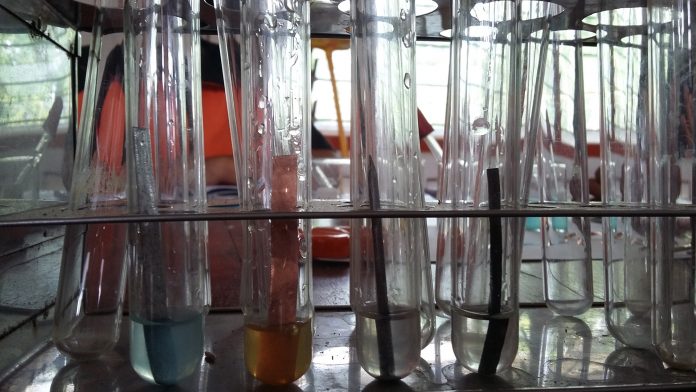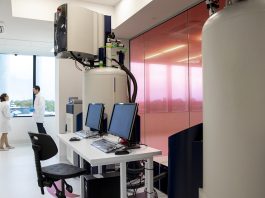A team of researchers from Cornell University has used electrochemistry to turn carbon dioxide into a series of organic molecules that are vital to pharmaceutical development.
By changing the type of electrochemical reactor, the team discovered that they could produce two completely different products, both of which are useful in medicinal chemistry.
The Cornell team, led by Song Lin, professor of chemistry and chemical biology in the College of Arts and Sciences, has previously used the process of electrochemistry to stitch together simple carbon molecules and form complex compounds, eliminating the need for precious metals or other catalysts to promote the chemical reaction.
The study, ‘Electrochemical Reactor Dictates Site Selectivity in N-Heteroarene Carboxylations,’ was published in the journal Nature.
Using pyridine to convert carbon into organic energy
The team used pyridine, the second-most prevalent heterocycle in FDA-approved drugs, for the new project. Heterocyles are organic compounds in which the molecules’ atoms are linked into ring structures, at least one of which is not carbon. These structural units are considered to be ‘pharmacophores’ for their frequent presence in medicinally active compounds. They are also commonly found in agrochemicals.
The researchers’ goal was to use electrochemistry to make carboxylated pyridines – pyridines with carbon dioxide appended to them. Introducing carbon dioxide to a pyridine ring can change a molecule’s functionality and potentially help it bind to certain targets, such as proteins. However, the two molecules are not natural partners. Pyridine is a reactive molecule, while carbon dioxide is generally inert.
“There are very few ways of directly introducing carbon dioxide to a pyridine,” said Lin, the paper’s co-senior author, along with Da-Gang Yu of Sichuan University. “The current methods have very severe limitations.”
Overcoming limitations through electrochemistry
Lin’s lab combined its expertise in electrochemistry with Yu’s group’s specialisation in utilising carbon dioxide in organic synthesis, and they were able to successfully create carboxylated pyridines.
“Electrochemistry gives you that leverage to dial in the potential that is sufficient to activate even some of the most inert molecules,” Lin explained. “That’s how we were able to achieve this reaction.”
The team’s discovery emerged while they were conducting the electrosynthesis. Chemists typically run an electrochemical reaction in one of two ways: in an undivided electrochemical cell (in which the anode and cathode that supply the electric current are in the same solution) or in a divided electrochemical cell (whereby the anode and cathode are separated by a porous divider that blocks large organic molecules but allows ions to pass through). One approach may be more efficient than the other, but they both produce the same product.
Lin’s group found that by switching from a divided to an undivided cell they could selectively attach the carbon dioxide molecule to different positions of the pyridine ring, creating two different products: C4-carboxylation in the undivided cell and C5-carboxylation in the divided cell.
Could this process contribute to saving the planet?
Lin said: “This is the first time we discovered that by just simply changing the cell, what we call the electrochemical reactor, you completely change the product.”
“I think that mechanistic understanding of why it happened will allow us to continue to apply the same strategy to other molecules, not just pyridines, and maybe make other molecules in this selective but controlled fashion. I think that’s a general principle that can be generalised to other systems.”
The project’s form of electrochemistry for carbon dioxide utilisation is not going to solve the global challenge of climate change, however, “it’s a small step towards using excessive carbon dioxide in a useful way,” Lin concluded.









